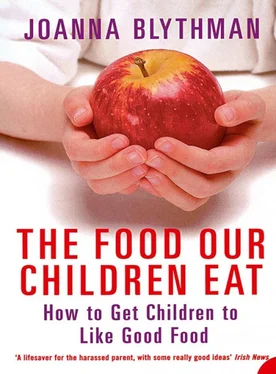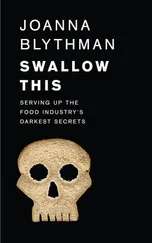How does this work?
We start to make decisions about how our children will eat from day one. The first issue is whether to breastfeed or use formula milk in a bottle. On this one there is widespread agreement: try to breastfeed if you can but, failing that, it’s fine to fall back on formula milk.
When breastfeeding goes well, it is simple, natural and rewarding. There are no worries about sterilising teats and bottles, no tricky temperature judging, no need to work your way through the formula milks on sale to find the one your baby accepts.
When breastfeeding doesn’t work out, the routine preparation of formula and all that it entails can seem like light relief after sore nipples, frustration and a dissatisfied baby. Parents who actively choose formula milk or who just end up using it know that this milk has been specially formulated to be as similar to breast milk as possible. We have been told that it is not good enough simply to give our offspring any old milk, be that cow’s, goat’s, sheep’s or even soya, because in its standard form it has not been adapted for the sensitive digestive systems of human infants.
Such advice is, of course, sensible and accurate. If we can’t feed babies on nature’s intended breast milk, we must rely on commercial companies, their scientists and nutritionists, to devise formulas that give them all they need to grow and won’t upset them or spark off allergies. It’s a complicated business and we must leave it in the hands of the experts.
But thereafter, if we want our children to grow up to be adults who eat well – adults with wide-ranging tastes who enjoy food and self-select nutritious food – we need to draw a line under the food industry’s scientific ‘advice’. From the time that we introduce the first weaning foods, usually in that critical and often challenging time when our baby is four to six months old, we do not need to rely routinely on commercial baby foods any more than we need to employ a food taster to check that our food hasn’t been poisoned. Instead, we need to view all those little jars and packets with a healthy cynicism.
Why? Like formula milk, many weaning foods give the impression that there is something special about them, that they are foods devised by knowledgeable nutritionists and doctors. Obviously, manufacturers have a direct interest in fostering this impression. In 1998 the British baby-food market was worth almost £164,000 million, and it is growing each year. So food manufacturers make a lot of money supplying parents with foods they think they cannot make themselves.
But unlike formula milk, which is a carefully devised product, commercial baby foods are nothing special. Though there are a few high-quality exceptions, most commercial baby foods represent nothing more than bulk-bought ingredients that have been heavily processed.
So when we buy ‘ baby apple’ for example, naive and lacking in confidence as many parents are, we may fondly think that the apples therein are somehow superior to apples that we might use ourselves. Just because the jar contains apples for babies , it seems safer and more trustworthy than any apple equivalent we might prepare ourselves. The very existence of baby-food apples may even make us feel, quite wrongly, that we are not capable of producing our own version.
Yet the reality is that, with the exception of organic brands, most commercial baby-food apples are sourced in bulk from the general supply of apples destined for processing. Far from being the pick of the crop, they might just as well be turning up in a commercial apple pie or a ready-made apple sauce. The poor little baby consumers didn’t get any special deal here.
This example highlights the main shortcomings of most commercial brands of baby foods, which are:
• The raw ingredients are nothing special; they are sourced from undistinguished bulk ingredients destined for processing.
• These ingredients will be processed on an industrial scale to extend their shelf life. This destroys much of the natural goodness in them and makes it necessary to introduce additives, such as synthetic vitamins, that would not be necessary in home-made versions.
• Heavy processing and the adulteration of raw ingredients with industrial additives produce food that is bland, samey and lacks the palette of flavours found in real, home-produced foods. Babies who start out on this limited range of flavours may find it hard to make the transition to the flavour of fresh food.
• They represent poor value for money. Commercial baby foods work out infinitely more expensive than home-made equivalents. You pay a high price for the convenience and the ingredients will definitely be less fresh and often of lower quality than those you might use at home.
But what about all those reassuring ‘tick lists’? Don’t they promise nutritional standards far above anything that can be produced at home?
The answer is no. The purpose of these lists is to inspire confidence in the adult buying the food. On typical commercial baby foods, the strategy is to dazzle you with ticks that make a virtue of the obvious by simply stressing the basic qualities that all baby food should have anyway.
A classic tick list, on those baby apples again, might read, ‘No added sugar, no artificial flavours, no artificial colours, no added preservatives, no added salt, suitable for vegetarians, gluten-free, milk-free’. You don’t have to be a nutritionist to figure out that you don’t normally put salt in apple purée any more than you would include any of the other tick-listed items.
Although tick lists seem to be helpful and to offer more information about the product, a tick list like this on baby apples is, viewed charitably, beside the point. Sometimes it is downright confusing. Take the question of prominent added vitamins. Some parents actually stop making food for their babies because they worry that it won’t have as many vitamins as commercial brands. In fact, home-made baby food is likely to retain more vitamins than over-processed commercial gloop, and these will be in a natural form which is much better for babies on wider health grounds.
On the more complicated multi-ingredient foods, the actively misleading effect of tick lists is to inspire confidence while drawing attention away from the ingredients (usually industrial bulking ingredients and water) that shouldn’t be there in the first place. Other apparently confidence-inspiring claims still give baby-food manufacturers plenty of room for manoeuvre. For example, a ‘No artificial colours/flavours/thickeners’ claim still allows for the inclusion of natural colours, flavours and thickeners. Though these may be preferable in some ways to their synthetic equivalents, they cannot be taken as positively beneficial. If the food was good quality and made from excellent ingredients to start with, such additives – natural or synthetic – would not be necessary. Similarly a prominent ‘No added sugar’ claim can still go on a food that contains sweet ingredients such as fruit juice.
To put it bluntly, babies who start out life on these foods are simply eating very ordinary processed food – with all the shortcomings that has – packaged so as to play on our confusion about healthy eating and our anxieties about how best to feed our children. That’s precisely the kind of product that babies and parents can live without. If we want our babies to grow into children, then adults, who appreciate a wide range of wholesome food, the regular use of commercial baby food is a block to that process. So if you don’t want your children to go into the black tunnel that leads from processed baby food to processed children’s junk, Part Four, Getting It Right with Babies and Toddlers, tells you all you really need to know about preparing your own (which can be as simple as mashing a banana or grating an apple). It also explains how to read between the lines on food labels and select the best ready-made baby food when you need it as a back-up for home-made.
Читать дальше











